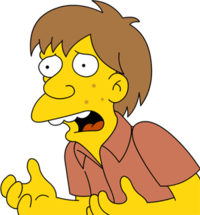
Directed by Jacques Becker.
Starring Mark Michel and Jean Keraudy.
Starring Mark Michel and Jean Keraudy.
In a Nutshell: Five inmates attempt an escape.
The final film of director Jacques Becker is a marvel; smoothly unsophisticated in its depiction of grimy, laborious escape. Filmed in pseudo-documentary style with long unbroken takes, untrained actors (including real-life prison escapee Jean Keraudy) and no score, The Hole has a somber authenticity to its mechanisms. It does not thrive on grand spectacle or proclamations; the characters’ actions pulse with the animalistic instinct, be it freedom, desperation or brutality. But it is also a world of unity, one tested by the arrival of the fifth (Mark Michel), an adulterer sentenced for accidentally shooting his furious wife. He gradually enters the four’s inner circle as they plan to break through their cell floor to freedom’s beckon.
The final film of director Jacques Becker is a marvel; smoothly unsophisticated in its depiction of grimy, laborious escape. Filmed in pseudo-documentary style with long unbroken takes, untrained actors (including real-life prison escapee Jean Keraudy) and no score, The Hole has a somber authenticity to its mechanisms. It does not thrive on grand spectacle or proclamations; the characters’ actions pulse with the animalistic instinct, be it freedom, desperation or brutality. But it is also a world of unity, one tested by the arrival of the fifth (Mark Michel), an adulterer sentenced for accidentally shooting his furious wife. He gradually enters the four’s inner circle as they plan to break through their cell floor to freedom’s beckon.
Drawing the viewer into the exertion is done with minimalist skill. One of the most famous shots has a four-minute take of the men pounding away at the concrete floor. This is real labor, not the sort of detail glossed over in a cut or dissolve. Close-ups of hands, dim lights and sweaty faces shrink close us into the spiritual purity of the struggle. The tremors of each new development and bond resonate against the bareness of the production. Becker has his finger on the pulse of the collective, the scrutiny of the prisoner’s day-to-day and the yearning to escape into the darkness. The underground that the men must traverse becomes a mythical labyrinth where, forgoing all earthly tension, each man becomes one with the same resolute hunger. By the time two of the men get a glimpse outside the walls, each is stirred in awe. But through Becker’s eye, even the slightest glance can tell so much more.




